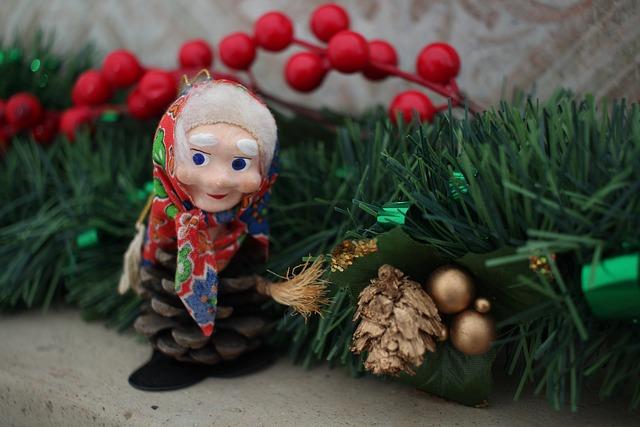Tooth Fairy Tales: Explore Tooth Fairy Names Around the Globe
Welcome to the enchanting world of tooth fairy tales! In every corner of the globe, children eagerly await the arrival of their very own tooth fairy, a magical being who collects their lost teeth and leaves a small treasure in return. But have you ever wondered about the different names and traditions associated with this beloved character? From the mystical Ratoncito Pérez in Spain to the whimsical Zahnfee in Germany, join us on a fascinating journey as we explore tooth fairy names from around the world. Prepare to be captivated by the rich diversity of beliefs and customs that surround this delightful folklore figure. So, fasten your seatbelts and get ready to embark on this delightful quest to unravel the secret tooth fairy names that have been cherished by generations!
1. Unveiling the Enchanting World of Tooth Fairy Names: A Global Odyssey
Embark on a captivating journey as we delve into the mesmerizing realm of tooth fairy names from around the world. Prepare to be enchanted as we uncover the fascinating diversity and rich cultural heritage behind these magical beings. From North America to Europe, Asia to Africa, each region has its own unique and spellbinding tooth fairy persona.
Delving into the realm of tooth fairy names, we find an array of captivating monikers that reflect the cultural tapestry of different countries. Let’s explore some of the most enchanting ones:
- La Petite Souris - France: In France, children eagerly await the arrival of La Petite Souris, a tiny mouse who collects their lost teeth and leaves behind a small gift or monetary reward.
- Pérez - Spain and Latin America: In Spanish-speaking countries, the tooth fairy is often called Pérez. This magical creature takes away children’s teeth and replaces them with coins or small presents while they sleep.
- Hammaskeiju – Finland: Finnish folklore introduces us to the Hammaskeiju, a fairy who carries a wand and collects children’s teeth in exchange for coins or treats.
These are just a glimpse into the enchanted world of tooth fairy names. Join us as we continue our global odyssey, uncovering more whimsical and delightful tooth fairy personas from across the globe.

2. Journeying Across Cultures: Discovering the Diverse Names of Tooth Fairies
When it comes to tooth fairies, many people are familiar with the concept of a magical creature who visits children when they lose a tooth. However, what most people may not realize is that tooth fairies go by different names in various cultures around the world. Let’s embark on a fascinating journey across cultures and discover the diverse names of tooth fairies.
In Europe, the tooth fairy is commonly known as the “Tooth Mouse.” According to European folklore, when a child loses a tooth, they place it under their pillow at night. While they sleep, the Tooth Mouse sneaks in, takes the tooth, and leaves a small gift or money in its place. This tradition is particularly popular in countries like France, Spain, and Italy.
In Latin America, the tooth fairy takes on a different form known as the ”Tooth Mouse” or the “Tooth Rat.” Similar to the European tradition, children place their lost tooth under their pillow, and the Tooth Mouse/Rat replaces it with a small reward. This cultural variation can be found in countries like Mexico, Argentina, and Brazil.
In Asia, the tooth fairy has a unique name: the ”Tooth Tiger.” According to Asian mythology, tigers have strong teeth, symbolizing bravery and strength. When a child loses a tooth, they leave it on a windowsill or under a tree, and the Tooth Tiger comes to collect it, leaving behind a gift or money as a token of good luck.

3. From Befana to Ratoncito Pérez: Exploring Tooth Fairy Tales Worldwide
When it comes to tooth fairy tales, there are fascinating variations from different cultures around the world. Here are some examples:
- Befana: In Italy, children put their lost teeth in a shoe on the night of January 5th. The Befana, a kind old witch, flies on her broomstick and replaces the tooth with gifts or candy.
- Ratoncito Pérez: In Spain and Latin America, children place their lost teeth under their pillow, and Ratoncito Pérez, a little mouse, comes to collect them. He leaves a small gift or money in exchange.
- Chōjinbō: In Japan, children throw their lost teeth onto the roof if the tooth came from the upper jaw, or into the ground if it came from the lower jaw. This is done to ensure the new tooth grows straight.
These examples demonstrate the rich diversity of tooth fairy traditions worldwide. From witches to mice to unique rituals, each culture has its own enchanting way of celebrating the loss of baby teeth.
4. A Fascinating Tapestry of Traditions: Tooth Fairy Names in Different Countries
The Tooth Fairy is a beloved character in many cultures around the world, but did you know that she goes by different names in different countries? It’s fascinating to explore the rich tapestry of traditions associated with this enchanting figure. Here are some interesting Tooth Fairy names from various corners of the globe:
- Fée des Dents (France): In France, children eagerly await the visit of the Fée des Dents, which translates to ”Tooth Fairy.” Just like in other countries, French children place their lost teeth under their pillows at night and wake up to find a small gift or money in exchange.
- El Ratoncito Pérez (Spain and Latin America): In Spanish-speaking countries, the Tooth Fairy is known as El Ratoncito Pérez, or “Pérez the Mouse.” This tiny mouse collects children’s teeth and leaves a small reward behind. It’s a charming twist on the familiar Tooth Fairy tale.
- Tannfeen (Norway): Norwegian children believe in the Tannfeen or “Tooth Fairy.” Instead of placing their teeth under their pillows, they often leave them in a glass of water, which Tannfeen then drinks. In return, children receive a small gift or some money.
These are just a few examples of the diverse names and customs associated with the Tooth Fairy worldwide. From La Petite Souris in France to Zahnfee in Germany, each country has its own unique take on this magical character. Regardless of the name, the Tooth Fairy brings excitement and wonder to children as they celebrate losing their baby teeth.
5. The Magical Persona of the Tooth Fairy: Names That Captivate Young Hearts
In the world of childhood fantasies, the Tooth Fairy reigns supreme as a beloved character who captures the hearts of young children. One of the many enchanting aspects of this magical persona is the variety of names she goes by in different cultures and regions.
Let’s dive into the captivating names that have been bestowed upon the Tooth Fairy across the globe:
- Petite Souris: In French folklore, children eagerly await the visit of the Petite Souris, translating to “Little Mouse.” This adorable name adds a touch of whimsy to the Tooth Fairy legend.
- Hada de los Dientes: Spanish-speaking children are visited by the Hada de los Dientes, which translates to “Tooth Fairy.” This name preserves the magical essence of the character while embracing the Spanish language.
- Fée des Dents: In French-speaking regions, the Fée des Dents, or “Tooth Fairy,” brings joy to children as she collects their lost teeth. This name evokes a sense of wonder and mystery.
These names, among many others, highlight the universal fascination with the Tooth Fairy and her role in the cherished tradition of exchanging lost teeth for small treasures. Each name brings its own cultural flair while maintaining the enchantment that captures the hearts of young ones worldwide.
6. Unearthing the Origins: Tracing the Historical Roots of Tooth Fairy Names
When it comes to the Tooth Fairy, the origins of her name have always been a subject of curiosity. In this section, we will delve into the historical roots of Tooth Fairy names and uncover the fascinating journey of how these names have evolved over time.
1. Folklore and Mythology: The Tooth Fairy has its roots in various folklore and mythological traditions around the world. In many cultures, there are similar figures who collect children’s lost teeth and leave a gift or money in return. Some notable examples include the Mouse Fairy in France, Ratoncito Pérez in Spain, and Topolino in Italy.
2. The Tooth Fairy in Popular Culture: Over the years, the Tooth Fairy has gained significant popularity in children’s literature, movies, and media. This widespread attention has led to the development of diverse names for the Tooth Fairy. From classics like “Tooth Mouse” to more imaginative names like “Tooth Queen” or “Tooth Wizard,” the possibilities seem endless.
3. Regional and Linguistic Influences: The historical roots of Tooth Fairy names are often influenced by regional and linguistic factors. For instance, in German-speaking countries, the Tooth Fairy is known as “Zahnfee,” while in Arabic-speaking cultures, she is referred to as “Fata al-Sinnara.” These language-specific variations add richness to the diverse array of names associated with the Tooth Fairy.
As we trace the historical roots of Tooth Fairy names, we discover a tapestry of cultural influences, mythology, and the power of imagination. The ever-evolving nature of these names reflects the diversity of human traditions and the timeless enchantment of childhood folklore.
7. Cultural Significance and Symbolism: Understanding the Meanings Behind Tooth Fairy Names
In many cultures around the world, the Tooth Fairy is a beloved childhood figure who is responsible for collecting children’s lost teeth and leaving a small gift or monetary reward in exchange. However, what many people may not realize is that the Tooth Fairy goes by different names and holds various cultural significances and symbols.
1. La Petite Souris - Known as “The Little Mouse” in French, this version of the Tooth Fairy is believed to have originated from France. Instead of a fairy, children place their lost teeth under their pillow for La Petite Souris to collect and replace with a small gift or money. The mouse symbolizes good luck and prosperity, and this tradition is deeply rooted in French culture.
2. Hada de los Dientes – In Spanish-speaking countries, the Tooth Fairy is referred to as “Hada de los Dientes.” Similar to the English version, children place their lost teeth under their pillow, and the Hada de los Dientes replaces them with a gift or money. This tradition holds cultural significance and symbolizes the transition from childhood to adolescence.
3. Zână din Dinte – In Romanian folklore, the Tooth Fairy is known as “Zână din Dinte.” Children place their lost teeth in a glass of water before going to bed, and the Zână din Dinte is believed to visit during the night to take the tooth and leave a small gift. The water symbolizes purity and renewal, and this tradition is deeply rooted in Romanian culture.
These are just a few examples of the various names and cultural significances associated with the Tooth Fairy. Understanding the meanings behind these names provides insight into the diverse traditions and symbols that exist around the world, making the concept of the Tooth Fairy even more fascinating and rich in cultural heritage.
8. The Tooth Fairy Universe: An Intricate Network of Names, Stories, and Beliefs
Within the realm of childhood wonder, the Tooth Fairy exists as a captivating figure, celebrated in various cultures around the world. This enchanting being forms part of a vast and intricate network of names, stories, and beliefs that have been passed down through generations. Let’s delve into the fascinating world of the Tooth Fairy and uncover the diverse customs and traditions associated with this beloved character.
The Tooth Fairy is known by different names across different cultures. In the United States and Canada, she goes by the name “Tooth Fairy,” while in countries like Spain and Latin America, she is known as “El Ratoncito Pérez” or “Ratoncito de los Dientes.” In France, children believe in “La Petite Souris” (The Little Mouse), and in many Asian countries such as Japan, Korea, and India, the Tooth Fairy takes the form of a mouse or rat.
Regardless of cultural variations, the essence of the Tooth Fairy remains the same. When a child loses a tooth, they place it under their pillow, eagerly anticipating a visit from the Tooth Fairy. In exchange for the lost tooth, the Tooth Fairy leaves a small gift or a monetary reward, symbolizing the transition from baby teeth to permanent teeth.
- The Tooth Fairy’s origins can be traced back to European folklore, where it was believed that burying a child’s tooth ensured the growth of a healthy adult tooth.
- The tradition of the Tooth Fairy gained popularity in the early 20th century, thanks to the rise of children’s literature and the influence of popular culture.
- Today, the Tooth Fairy serves as a magical intermediary between childhood and adulthood, comforting children during the sometimes unsettling experience of losing a tooth.
Exploring the Tooth Fairy universe reveals a tapestry of beliefs and customs that have shaped the way children perceive and embrace this endearing mythical character. Whether you grew up with the Tooth Fairy or are discovering her for the first time, her presence in the folklore of countless cultures is a testament to the enduring magic and wonder of childhood.
9. Beyond the Brush: How Tooth Fairy Names Reflect Cultural Diversity
The Tooth Fairy is a beloved mythical character who is known for leaving a small gift or money under a child’s pillow in exchange for a lost tooth. While the concept of the Tooth Fairy is widely recognized, what many people may not realize is that the name and representation of this magical being varies across different cultures around the world.
1. United States: In the United States, the Tooth Fairy is the most common name given to this enchanting figure. Many American children eagerly anticipate a visit from the Tooth Fairy when they lose a tooth.
2. Spain: In Spain, the Tooth Fairy is called Ratoncito Pérez, which translates to “Little Mouse Pérez.” According to Spanish folklore, this tiny mouse collects children’s fallen teeth and leaves small gifts or money in exchange.
3. France: In France, children believe in La Petite Souris, which means ”The Little Mouse.” Similar to the Spanish tradition, children place their lost teeth under their pillows and wake up to find coins or treats left by the mouse.
4. India: In India, the Tooth Fairy goes by the name of Chhoti Pari, meaning “Little Fairy.” Children leave their lost teeth in a glass of water before going to bed, and in the morning, they find a small gift or money in its place.
These are just a few examples of how the Tooth Fairy’s name and customs differ across cultures. The diversity in these traditions reflects the uniqueness and richness of various societies around the world. It is fascinating to see how a simple childhood tradition can vary so widely, yet still bring joy and excitement to children everywhere.
10. Celebrating the Tooth Fairy: Embracing the Richness of Global Tooth Fairy Traditions
Did you know that the Tooth Fairy is not just a beloved figure in Western culture? Tooth Fairy traditions exist in various forms around the world, each with their own unique customs and stories. Exploring these diverse traditions can be a fascinating way to learn about different cultures and celebrate the universal experience of losing a tooth.
1. Spain: In Spain, children leave their lost teeth under their pillows for Ratoncito Pérez, a little mouse who collects the teeth and leaves small gifts or money in return. This tradition has been passed down for generations and is deeply cherished by Spanish families.
2. Japan: Japanese children have a unique twist on the Tooth Fairy tradition. They traditionally throw their lost teeth onto the roof of their house, shouting “Takeba no kami!” which means “Please give me strong, healthy teeth!” This is thought to ensure that their new teeth grow in strong and healthy.
3. India: In India, the Tooth Fairy is known as the “Tooth Mouse.” Children place their lost teeth in a special container called a “tooth box,” and the Tooth Mouse collects the teeth and leaves small gifts or money. This tradition is a delightful blend of local customs and the universal Tooth Fairy concept.
4. Mexico: Mexican children have a charming tradition called “El Ratoncito de los Dientes.” Similar to the Spanish tradition, children place their lost teeth under their pillows, and El Ratoncito de los Dientes comes at night to collect the tooth and leave a small gift or money.
5. Australia: Australians have their own unique Tooth Fairy figure called the “Tooth Fairy Kangaroo.” Along with collecting lost teeth, the Tooth Fairy Kangaroo also leaves behind a small toy or gift. This playful twist adds a touch of Australian flair to the tradition.
These are just a few examples of the diverse Tooth Fairy traditions celebrated around the world. Embracing and learning about these rich customs can foster cultural understanding and appreciation for the different ways people celebrate common experiences. So, the next time a tooth falls out, take a moment to reflect on the global tapestry of Tooth Fairy traditions.
Frequently Asked Questions
Q: What is the article “Tooth Fairy Tales: Explore Tooth Fairy Names Around the Globe” about?
A: This article delves into the fascinating world of tooth fairy folklore and explores the various names given to the mythical creature across different cultures around the world.
Q: Why is the tooth fairy a popular figure in folklore?
A: The tooth fairy has become a beloved character in folklore due to its role in comforting children and celebrating the loss of their baby teeth. It serves as a way to ease children’s fears and make the transition into adulthood more magical.
Q: How does the tooth fairy tradition differ across different cultures?
A: Across different cultures, the tooth fairy is known by various names and often has unique customs associated with the ritual of losing baby teeth. This article examines these cultural differences and sheds light on the diverse traditions surrounding the tooth fairy.
Q: Can you provide some examples of tooth fairy names from different cultures?
A: Certainly! In English-speaking countries, we commonly refer to the tooth fairy as such. However, other cultures have their own names, such as “la Petite Souris” in France, “Ratoncito Pérez” in Spain, “Topolino” in Italy, and “Zubora-san” in Japan, to name just a few.
Q: What are some interesting customs or rituals associated with the tooth fairy?
A: In addition to collecting lost teeth, the tooth fairy often leaves behind a small gift or monetary reward for children who have placed their tooth under their pillow. Some cultures, such as in Spain, have unique customs where children place their tooth in a glass of water instead.
Q: Is the tooth fairy tradition the same worldwide?
A: While the tooth fairy tradition shares a common theme of rewarding children for losing their teeth, the specific customs and beliefs associated with the tooth fairy can vary greatly from country to country. This article aims to highlight these differences and celebrate the diversity of tooth fairy folklore.
Q: Why is it important to explore tooth fairy tales from around the world?
A: Exploring tooth fairy tales from different cultures not only provides insight into the rich tapestry of global folklore but also allows us to appreciate the unique ways in which societies celebrate and mark life’s milestones. It fosters cultural understanding and appreciation among people from different backgrounds.
Q: Where can one find more information on tooth fairy folklore?
A: There are various resources available, including books, websites, and anthropological studies, that delve into the topic of tooth fairy folklore. Additionally, local libraries or cultural centers may have information specific to certain cultures.
Wrapping Up
In conclusion, delving into the enchanting world of Tooth Fairy names from around the globe has revealed fascinating insights. From the whimsical Zahnfee of Germany to the mischievous Fat Mouse of Mexico, each culture has woven its own unique tale around this mystical figure. These diverse names not only reflect the rich tapestry of global traditions but also highlight the universality of losing baby teeth. Moreover, this exploration has shed light on the Tooth Fairy’s role as a cherished symbol of comfort and reward for children worldwide. So, the next time a little one eagerly places a tooth under their pillow, remember that they are participating in a time-honored tradition that spans continents and cultures. Through these magical tales, we are reminded of the power of imagination and the enduring wonder of childhood.





